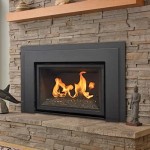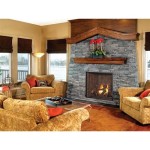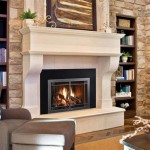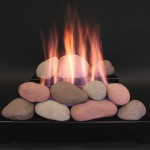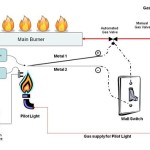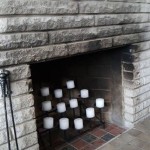Granite Tiles for Fireplace Surround: A Durable and Elegant Choice
Fireplaces serve as focal points in many homes, providing warmth, comfort, and aesthetic appeal. Enhancing the fireplace with a carefully chosen surround can significantly elevate its visual impact and contribute to the overall ambiance of the living space. Among the various materials available for fireplace surrounds, granite tiles offer a compelling combination of durability, elegance, and design versatility. This article explores the reasons why granite tiles are an excellent choice for fireplace surrounds, delving into their benefits, design considerations, installation aspects, and maintenance requirements.
The Enduring Advantages of Granite for Fireplace Surrounds
Granite, an igneous rock formed from slowly cooling magma deep beneath the Earth's surface, is renowned for its exceptional strength and resistance to heat, scratches, and stains. These inherent properties make it an ideal material for a fireplace surround, an area often subjected to high temperatures and potential soot exposure.
One of the primary advantages of granite is its superior heat resistance. Unlike some other materials, granite can withstand the intense heat generated by a fireplace without cracking, warping, or discoloring. This characteristic is particularly crucial for fireplaces that are used frequently or for extended periods. The ability to withstand high temperatures ensures the longevity of the surround and minimizes the risk of damage from the fireplace itself.
Furthermore, granite is remarkably durable and resistant to scratches and abrasions. This is especially important in high-traffic areas where the surround may be subjected to accidental bumps or scrapes. The dense composition of granite makes it less susceptible to damage compared to softer materials, ensuring that the fireplace surround maintains its pristine appearance for years to come.
Another significant advantage of granite is its resistance to stains. Granite tiles are typically sealed to prevent liquids from penetrating the surface, making them resistant to spills and stains from soot, ash, or other substances. This ease of cleaning is particularly beneficial in the vicinity of a fireplace, where spills and messes are more likely to occur. Regular cleaning with a mild detergent and water is usually sufficient to maintain the granite's luster and prevent the buildup of grime.
Beyond its functional benefits, granite offers a timeless elegance and a wide range of aesthetic possibilities. Available in a vast array of colors, patterns, and textures, granite can complement virtually any architectural style and design preference. From classic black and white to vibrant shades of red, blue, and green, the diverse color palette of granite allows for customization and personalization of the fireplace surround. The natural variations in granite's veining and patterns add depth and character, creating a unique and visually appealing focal point in the room.
Granite tiles are also readily available in various sizes and shapes, allowing for creative design layouts and intricate patterns. The tiles can be arranged in a variety of ways, such as stacked bond, herringbone, or mosaic patterns, to achieve the desired aesthetic effect. The flexibility in tile sizes allows for seamless integration with the surrounding wall and fireplace design.
Design Considerations for Granite Fireplace Surrounds
When selecting granite tiles for a fireplace surround, it is essential to consider several design factors to ensure a cohesive and visually appealing result. These factors include the color and pattern of the granite, the size and shape of the tiles, the overall style of the room, and the desired focal point.
The color of the granite should complement the existing décor and color scheme of the room. Neutral colors, such as beige, gray, and black, are versatile options that can blend well with various styles. However, bolder colors can be used to create a more dramatic and eye-catching effect. The choice of color should also consider the amount of natural light in the room, as darker colors can make a room feel smaller and less inviting if there is limited natural light.
The pattern of the granite is another important consideration. Granite can exhibit a wide range of patterns, from subtle veining to bold, swirling designs. The choice of pattern should depend on the desired level of visual interest and the overall style of the room. For a more minimalist look, a granite with subtle veining may be preferred. For a more dramatic and visually striking effect, a granite with bold patterns may be a better choice.
The size and shape of the granite tiles can also impact the overall appearance of the fireplace surround. Larger tiles can create a more seamless and modern look, while smaller tiles can add texture and visual interest. Rectangular tiles can be arranged in various patterns, such as stacked bond or herringbone, to create a unique design. The size and shape of the tiles should be proportional to the size of the fireplace and the surrounding wall area.
The overall style of the room should also be considered when selecting granite tiles for a fireplace surround. For a traditional room, a granite with classic colors and patterns may be more appropriate. For a modern room, a granite with sleek lines and minimalist patterns may be a better choice. The granite should complement the other design elements in the room, such as the furniture, lighting, and artwork.
The fireplace surround should be designed to create a focal point in the room. The granite should be chosen to draw the eye and create a sense of warmth and comfort. The surround can be further enhanced with decorative elements, such as a mantel, moldings, or a hearth. The overall design should be balanced and visually appealing.
Installation and Maintenance of Granite Tile Fireplace Surrounds
The installation of granite tile fireplace surrounds requires specialized tools and expertise to ensure a secure, level, and aesthetically pleasing finish. It is generally recommended to hire a professional tile installer with experience in working with granite to avoid potential issues and ensure a long-lasting installation.
Prior to installation, the surface on which the granite tiles will be installed must be properly prepared. This typically involves cleaning the existing surface, ensuring it is level and free from any loose debris. A cement board or other suitable backing material may be installed to provide a stable and even surface for the tiles.
The granite tiles are then carefully laid out and cut to fit the dimensions of the fireplace surround. A wet saw is typically used to cut granite tiles accurately and prevent chipping. The tiles are then adhered to the surface using a thin-set mortar specifically formulated for granite. The mortar should be applied evenly and the tiles should be pressed firmly into place to ensure proper adhesion.
Once the mortar has dried, the grout is applied between the tiles to fill the joints and create a waterproof seal. The grout should be carefully selected to complement the color of the granite tiles. After the grout has dried, it is sealed to prevent staining and water damage.
After installation, regular maintenance is essential to keep the granite tile fireplace surround looking its best. Regular cleaning with a mild detergent and water is usually sufficient to remove dirt and grime. Harsh chemicals and abrasive cleaners should be avoided as they can damage the surface of the granite.
Granite tiles should be sealed periodically to protect them from stains and water damage. The frequency of sealing will depend on the type of granite and the amount of use the fireplace surround receives. A penetrating sealer designed for natural stone should be used to protect the surface of the granite. It's essential to follow the manufacturer's instructions for application and drying time.
Spills should be cleaned up immediately to prevent staining. Acidic substances, such as lemon juice and vinegar, should be avoided as they can etch the surface of the granite. If a stain does occur, it should be treated with a poultice specifically designed for granite.
By following these installation and maintenance guidelines, homeowners can ensure that their granite tile fireplace surround remains a beautiful and durable focal point in their home for many years to come.

Stone Fireplace Surround Granite Mantel Tile Surrounds

9 Design Ideas For Updating Or Adding A Fireplace To Your Home

China Customized Granite Slab For Fireplace Hearth Suppliers Whole Service Xuri Stone

Granite Tile Fireplace Surround Photos Ideas Houzz

Fireplace Tiles Best 253 Ideas Designs 2024 Ramirro

Granite Tile Fireplace Surround Photos Ideas Houzz

Fireplace Neolith Beton Calacatta Luxe Marble Trend Granite Tiles Toronto Tiled Wall Surround Surrounds

Easy L And Stick Stone Fireplace Surround Sondra Lyn At Home

Remodeling A Fireplace With Tile

Absolute Black Granite Fireplace Surrounds Tile Surround
Related Posts

